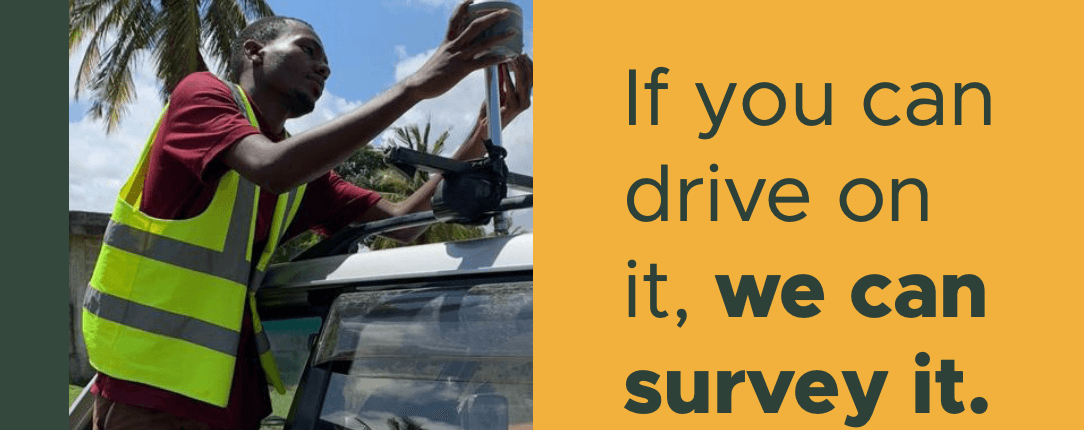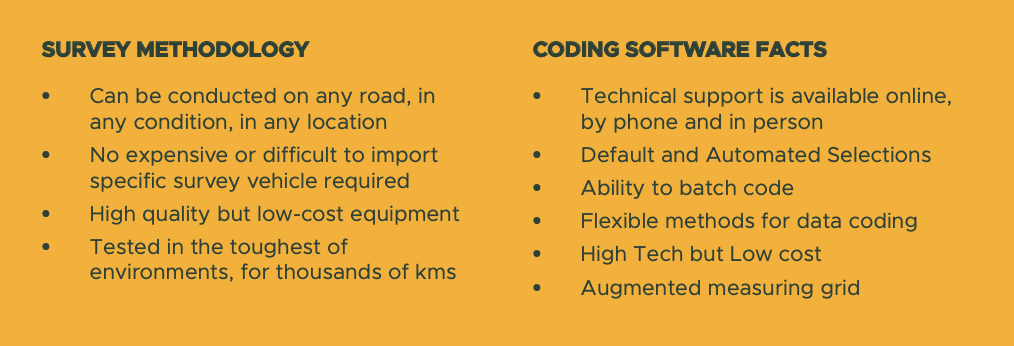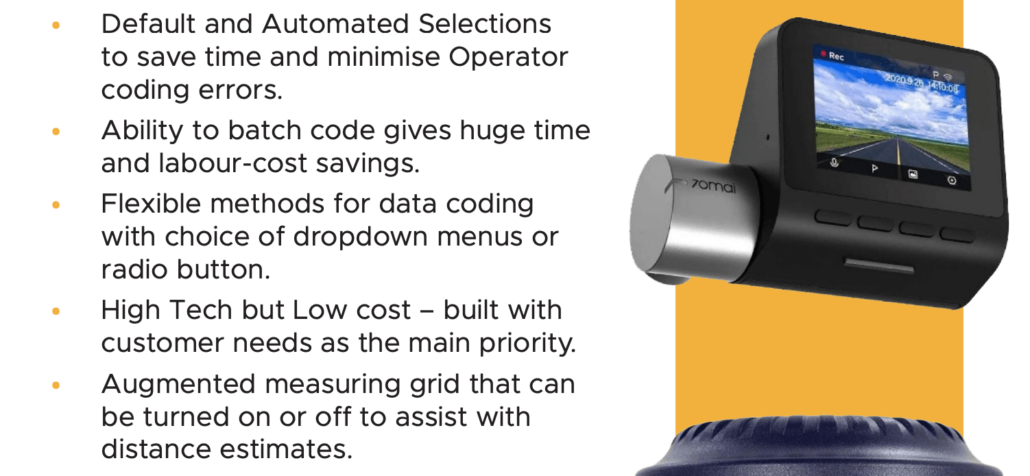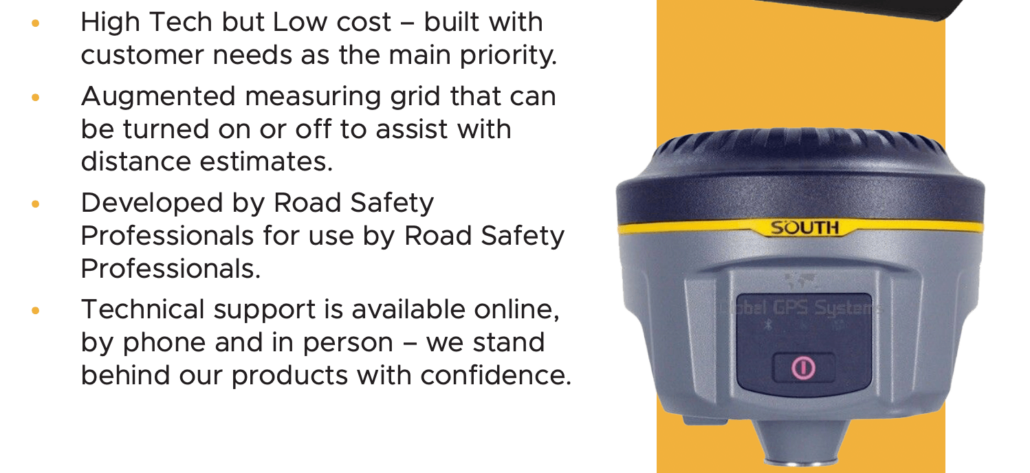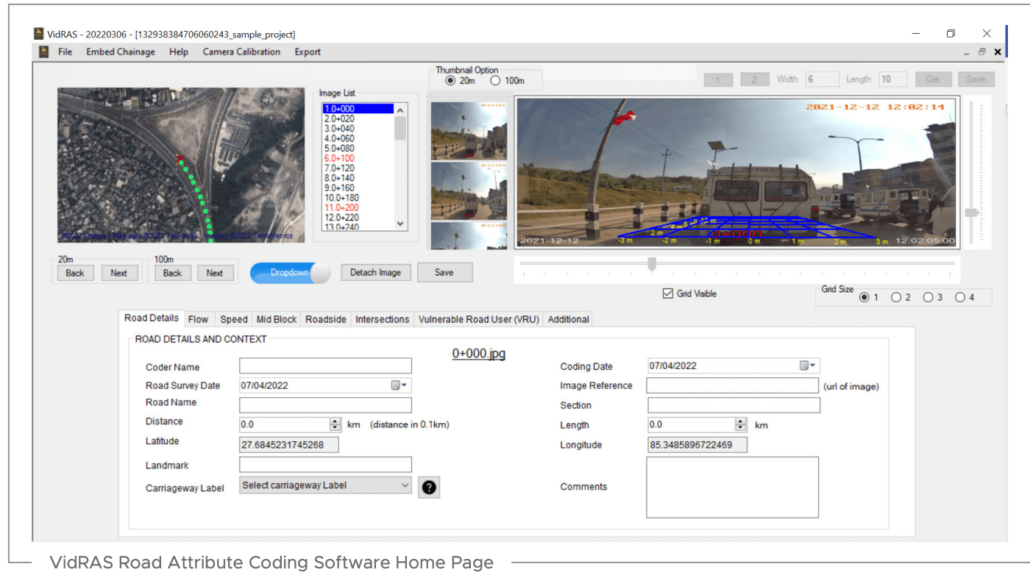VidRAS
VidRAS is an International Road Assessment Programme (iRAP) accredited Inspection System, which provides a methodology and the software needed to perform iRAP surveys and road attribute coding. VidRAS has been developed by Road Safety Professionals for use by Road Safety Professionals. It is capable of being deployed on any road in the world.
More....
VidRAS is an iRAP accredited Road Safety Infrastructure Inspection System, which provides a methodology and the software needed to perform iRAP surveys and road attribute coding. VidRAS has been developed by ITT’s road safety professionals, based on and tailored to the challenges ITT have experienced when conducting surveys and road attribute coding on the ground.
The survey methodology for conducting iRAP road surveys involves the use of 3 main pieces of equipment:
- Dashcam: the 70mai dashcam pro which gives the 140-degree field of view needed for conducting this type of survey
- GPS device which can be mounted to the roof of the vehicle: the South Galaxy G1 RTK GNSS receiver (recommended that if surveying in cities or built up areas that 2 devices are used, with 1 acting as a base station and 1 attached to the vehicle)
- Vehicle: any suitable vehicle – what vehicle is suitable will vary dependent on road condition and other factors
ITT have used this methodology and the same equipment to successfully survey over 5000 km of both paved and unpaved roads in Dar es Salaam, Tanzania. Some of the benefits of ITT’s survey methodology include:
- The methodology allows for surveys to be conducted on any road, in any condition, in any location
- There is no expensive or difficult to import specific survey vehicle or equipment required to conduct the surveys using this methodology. The equipment mentioned in the previous slide is highly flexible and can be easily mounted to the vehicle
- The methodology involves the use of High-quality but low-cost equipment selected by ITT who are experts in Intermediate Technology. As such, it is easy to deploy, low-cost to purchase, and requires minimal amounts of training to operate.
Once the video surveys have been completed the road attributes can be coded using the VidRAS Coding software. Road attribute coding involves the use of the georeferenced images collected during the survey which are then displayed in the software in order for road attributes for each 100m segment of road to be recorded. This road attribute coding data, along with other supporting data, is then used to develop iRAP Star Ratings for the roads that have been surveyed as well as a Safer Roads Investment Plan and, ultimately promote the implementation of road safety countermeasures that can save lives.
Some of the Unique Selling Points of our VidRAS coding software are:
- The software has default and automated selections which help minimise human error when inputting data
- The software also has the ability to batch code multiple road sections, which allows for huge time and labour-cost savings
- The software offers flexible methods for coding with the choice of either a dropdown menu or radio button, dependent on the coders preference
- The software features an augmented measuring grid that can be turned on or off to assist with distance estimates
- High-tech but low-cost, and built with customer needs as the main priority
ITT also provide technical support and training for both undertaking the road surveys and also using the coding software and this can be available online, by phone or in person.
To summarise, VidRAS is an iRAP accredited Inspection System, which provides a methodology and the software needed to perform iRAP surveys and road attribute coding. The data collected from undertaking the surveys and coding can then be used to determine a roads star rating and develop a Safer Roads Investment Plan – with the ultimate aim of preventing deaths and serious injuries on our roads. The collected data can be used for other purposes for example Asset Management but ultimately VidRAS is a leading tool in improving road safety infrastructure anywhere in the world and it is important that the relevant authorities take the lead and make these first steps in improving road safety.
Download the VidRAS brochure >> VidRAS-Brochure

